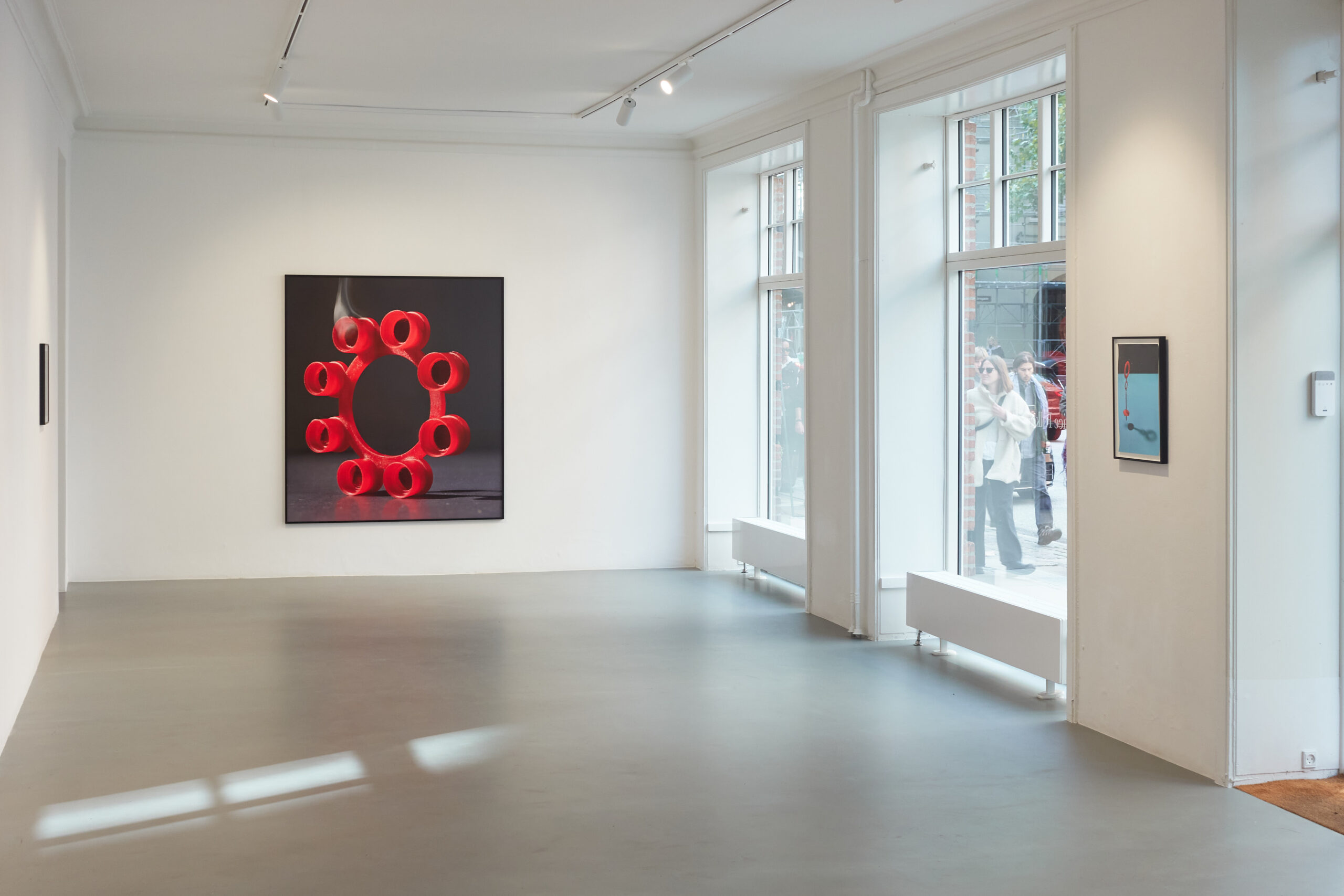



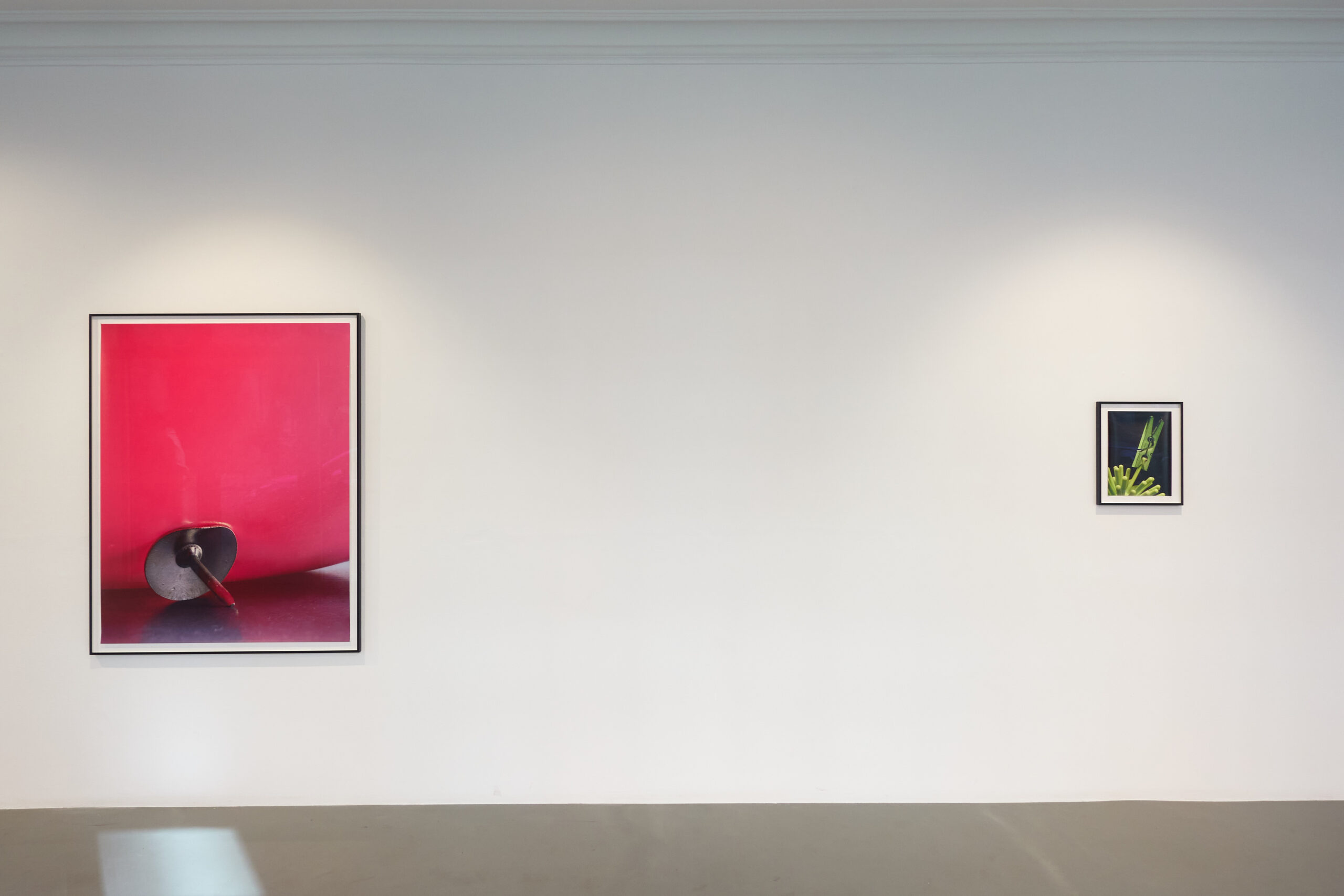
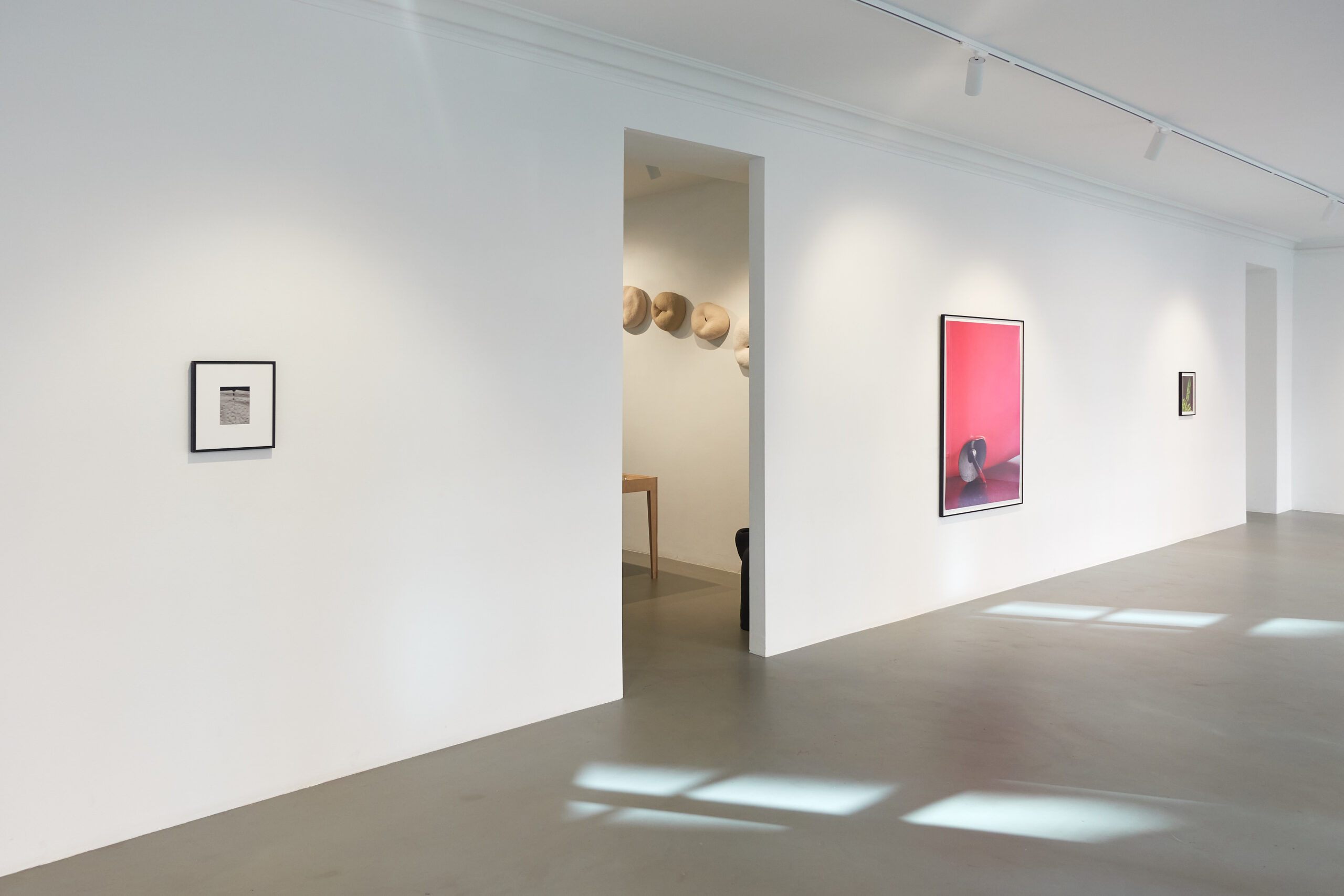
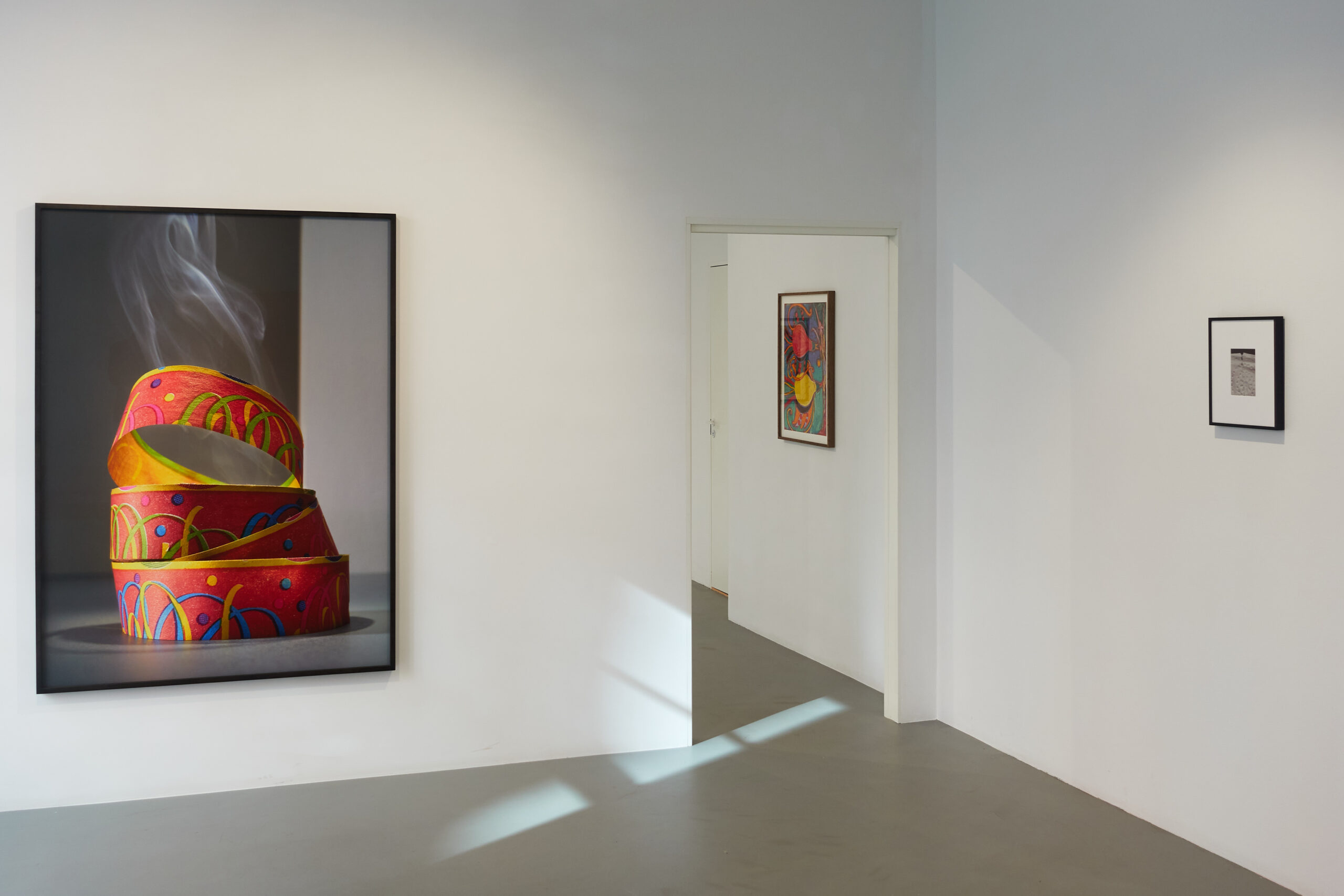
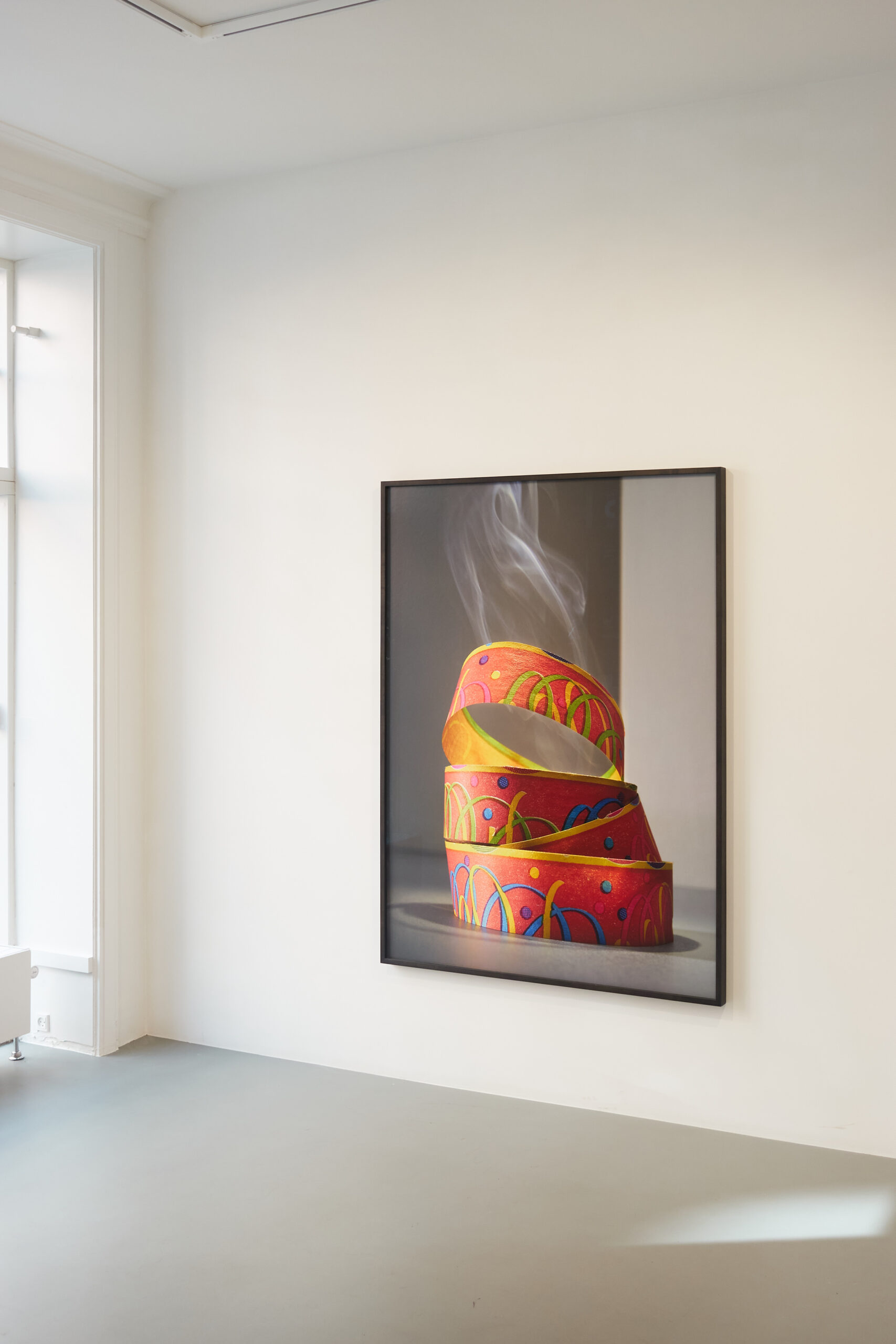
DE
EN
Six photographs constitute the exhibition Tensions. The idea of “tension” is anchored in Gestalt theory—a theory that explains how the mind perceives and interprets relationships between elements in a spatial configuration. There is a need for a beginning and an end; the human mind struggles to tolerate gaps and seeks closure. It is within these gaps that Alwin Lay’s photographs operate. A soap bubble wand hangs mid- air, defying gravity, with the suggestion that a bubble has just burst, leaving traces of small soap droplets in the air… or is the bubble still intact, having made its safe journey out of the frame?
By staging impossible situations and paradoxical actions that, despite their familiarity, exist only within the image, Lay creates visually striking compositions of everyday objects that demand attention and engage our gaze on multiple levels. We do not get the whole picture; instead, we are offered a fragment of the narrative, zooming in on a specific moment, leaving us with more questions than answers.
The tensions exist on several levels—in the contrasts in color, the framing, shape, size, and texture of the objects, as well as in the suspension of the image’s narrative. Something can happen at any moment that could change the image we are looking at.
Although aesthetically pleasing in composition and color, there is also something disturbing. A sense of collapse, destruction, tension, and a lack of redemption or release lurks in the images. With a few subtle artistic gestures, Lay punctuates the stillness so characteristic of the photographic medium. We hold our breath, anticipating the unknown outcome that, by the laws of nature, is bound to happen—the pin could puncture the pink balloon, the soap bubble wand could fall from its suspension in mid-air at any moment, the clamp could bend the plastic spike it grips under its own weight, or the party serpentine could catch fire, as indicated by the faint trace of smoke.
Just as there are many rules of composition in an image, there are many ways to break them. However, Lay neither breaks the composition of the image nor plays it safe, instead he creates a pleasing, colorful discomfort as the mind struggles to process what’s going on. Despite its deceptively simple arrangement, the image demands more effort to understand.
The hyper-realistic approach and accentuation of the objects’ surface and colors both familiarize and defamiliarize the image. The large scale of the frames—the biggest work measuring 180 x 160 cm—further enhances this process of defamiliarization and challenges the sense of control that we, as viewers, think we have by overpowering us with their dimensions.
The release is suspended, but at the same time it’s in this very gap that Lay playfully evokes anew Henri Cartier-Bresson’s (cofounder of Magnum in 1947) concept of the “Decisive Moment”—a notion of the famous peak in which all elements in the photographic frame accumulate to form the perfect image―not necessarily the moment of the height of action, but the formal, visual peak. Lay’s subtle yet bold tensions create a sense of excitement, energy, and drama challenging our expectations of photography and what we see.
The uncertainty present in Lay’s works is not only embedded within the images but also arises from the broader context to which they respond, reflecting the pervasive feeling of instability in our times—marked by climate change, a recently ended pandemic, ongoing wars, violence, and humanitarian crises. This is particularly evident in works such as Tensions, where toilet paper, a commodity that gained heightened value during Covid, revealed people’s not so pleasant survival instincts, while Munition, which features the red plastic bullet ring from children’s toy guns, evokes even deeper societal tensions. Lay invites us to hold our breath… if only for a brief moment.
Text by Josephine Julie Fity